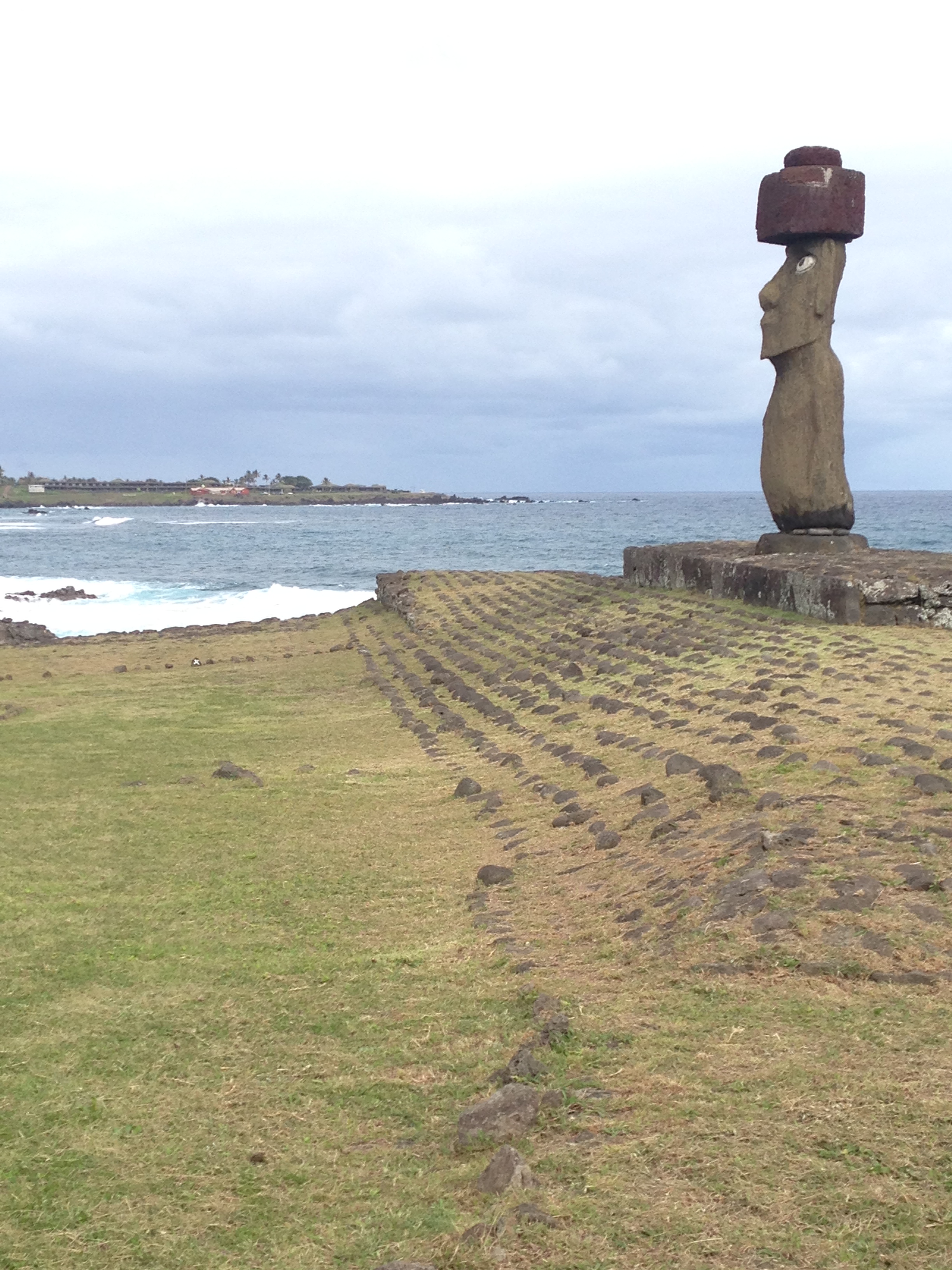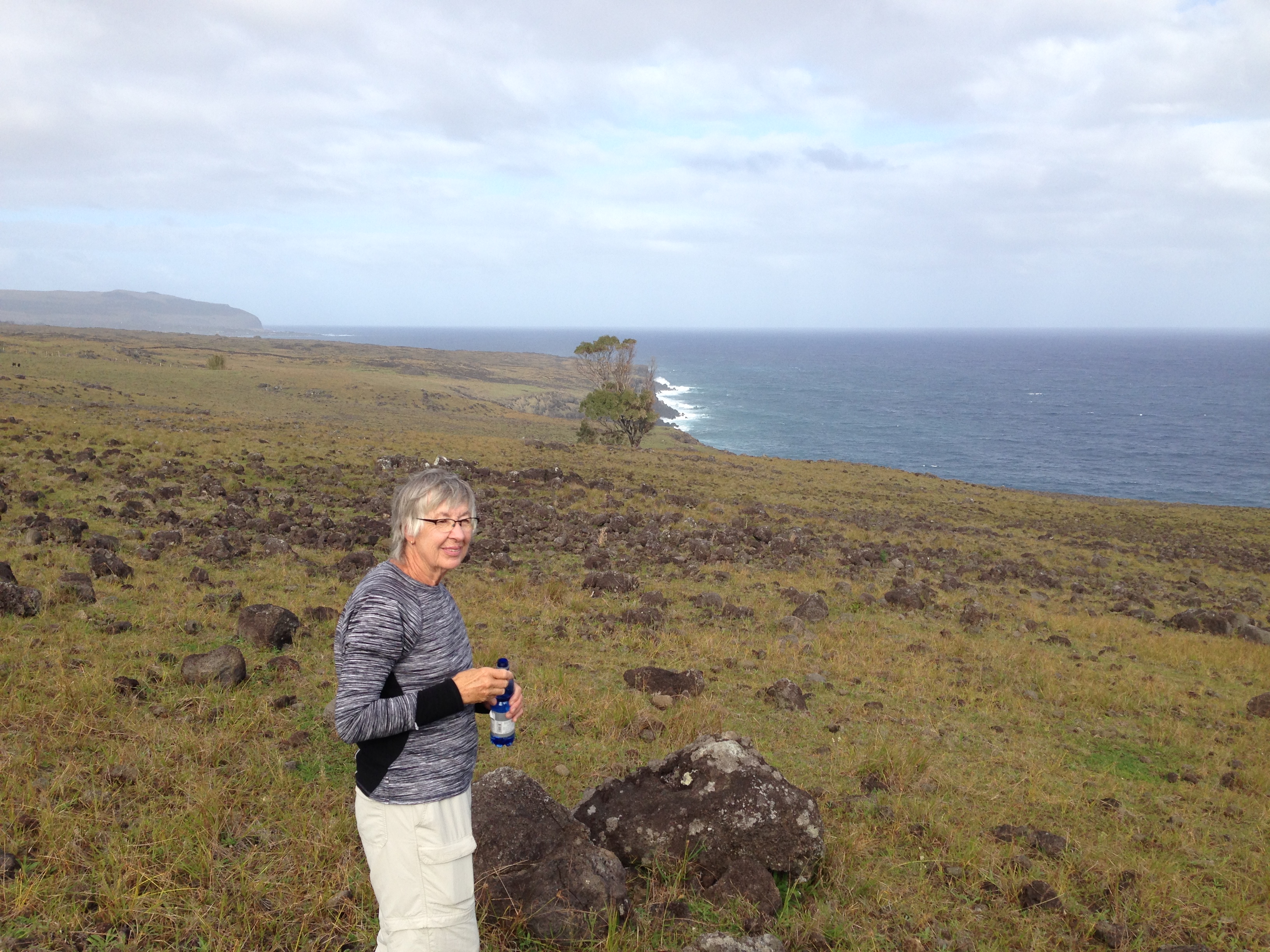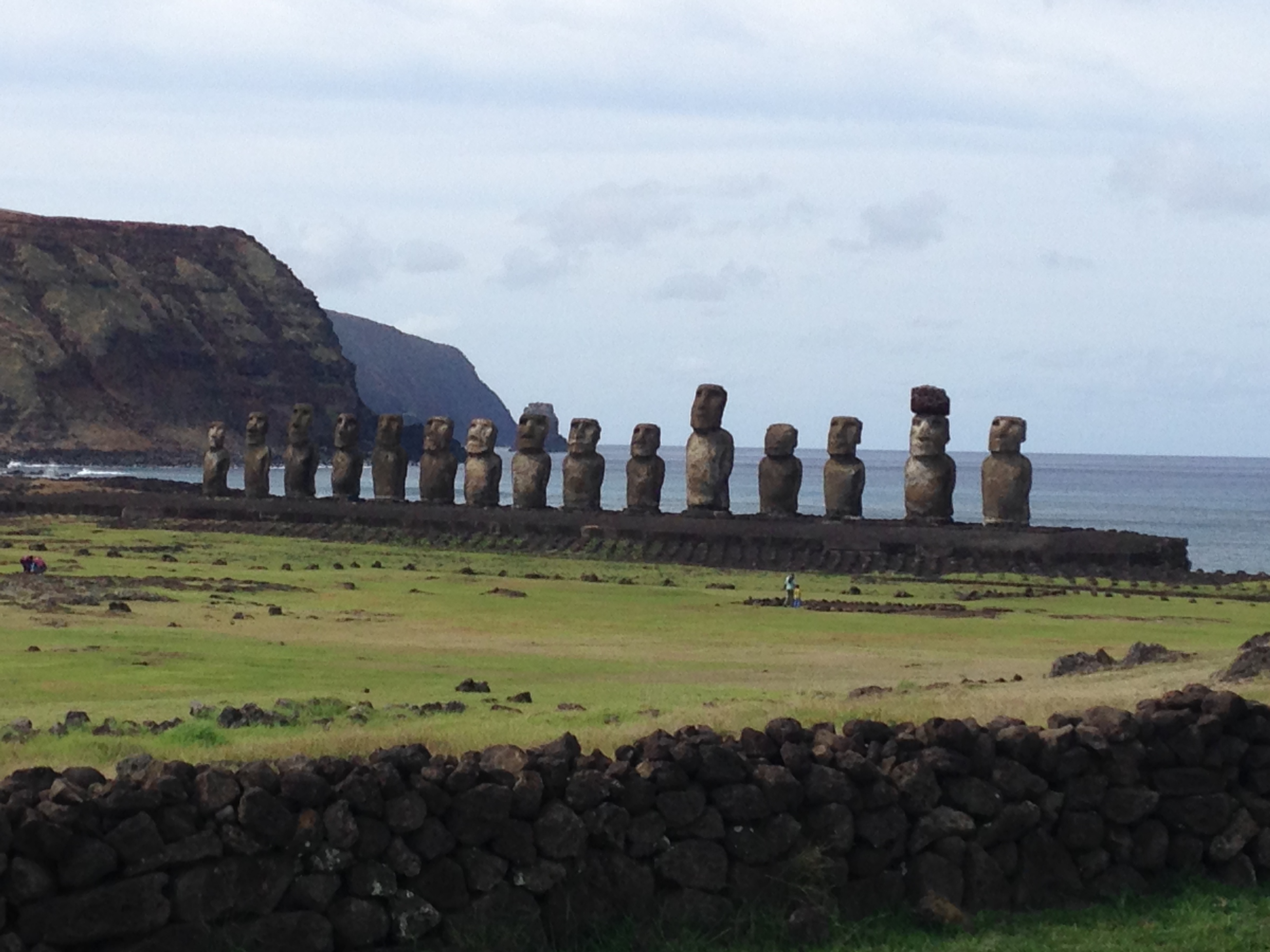Dear friends
Jan & Dave are temporarily back in Canada, but we'll return to Dulcinea in French Polynesia in early September with Neil and Mark, Heidi, Gemma, & Rory.
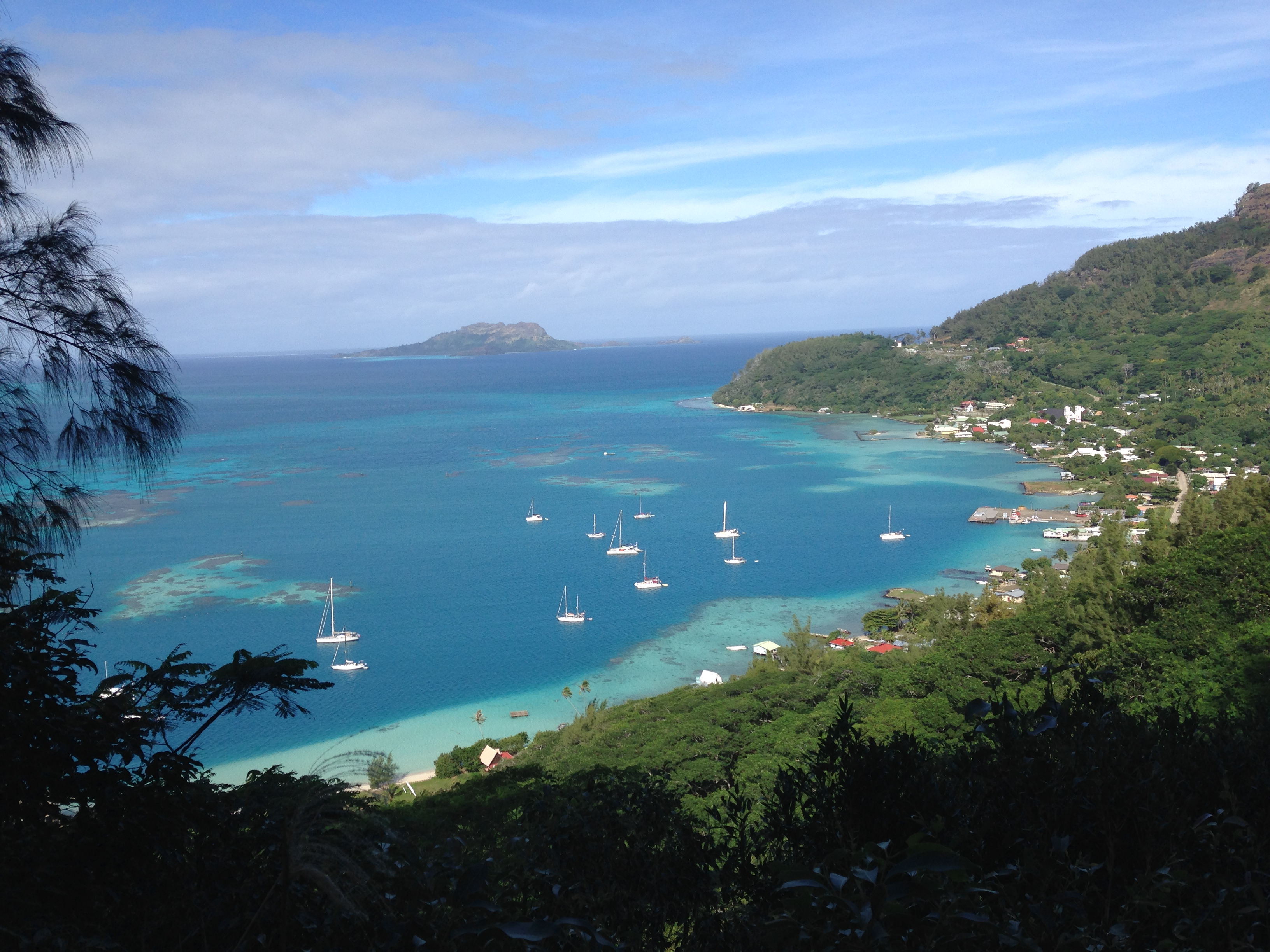
Dulcinea spent about 3 weeks in The Gambier Islands (SE corner of French Polynesia). It had been a long-cherished dream to visit them and they didn't disappoint us. 800 miles south of the Marquesas, the Gambiers are a little cooler, windier, and away from the main route for cruising sailors. There are several pearl farms, and just one village - Rikitea, which is peaceful and houses about 1,600 welcoming Polynesians.
Erik would take the the dinghy to the boulangerie at 5 am most mornings to buy freshly baked baguettes for breakfast, but that became sporadic as the supply ship from Papeete was late and the boulangerie was running out of yeast.
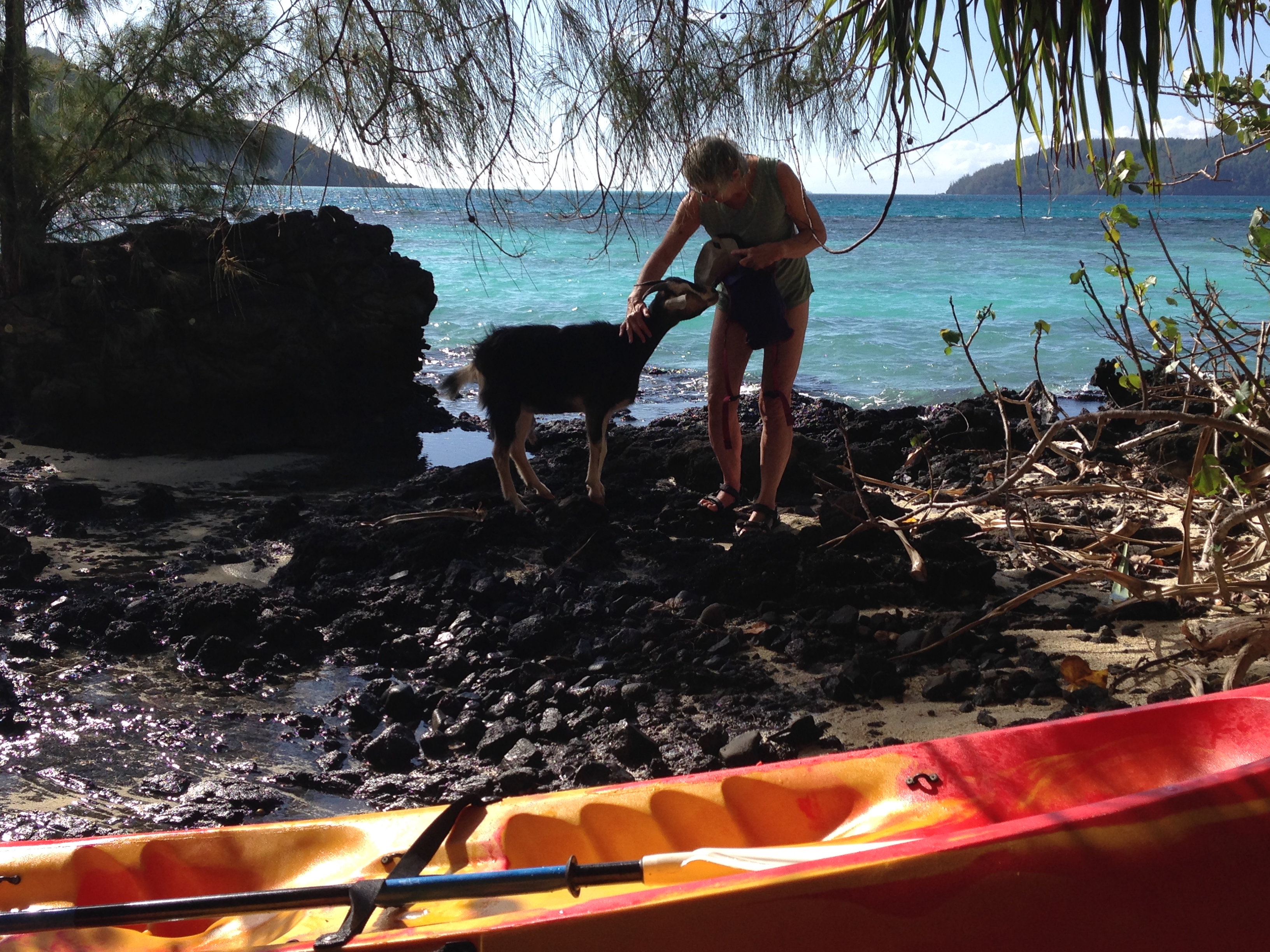
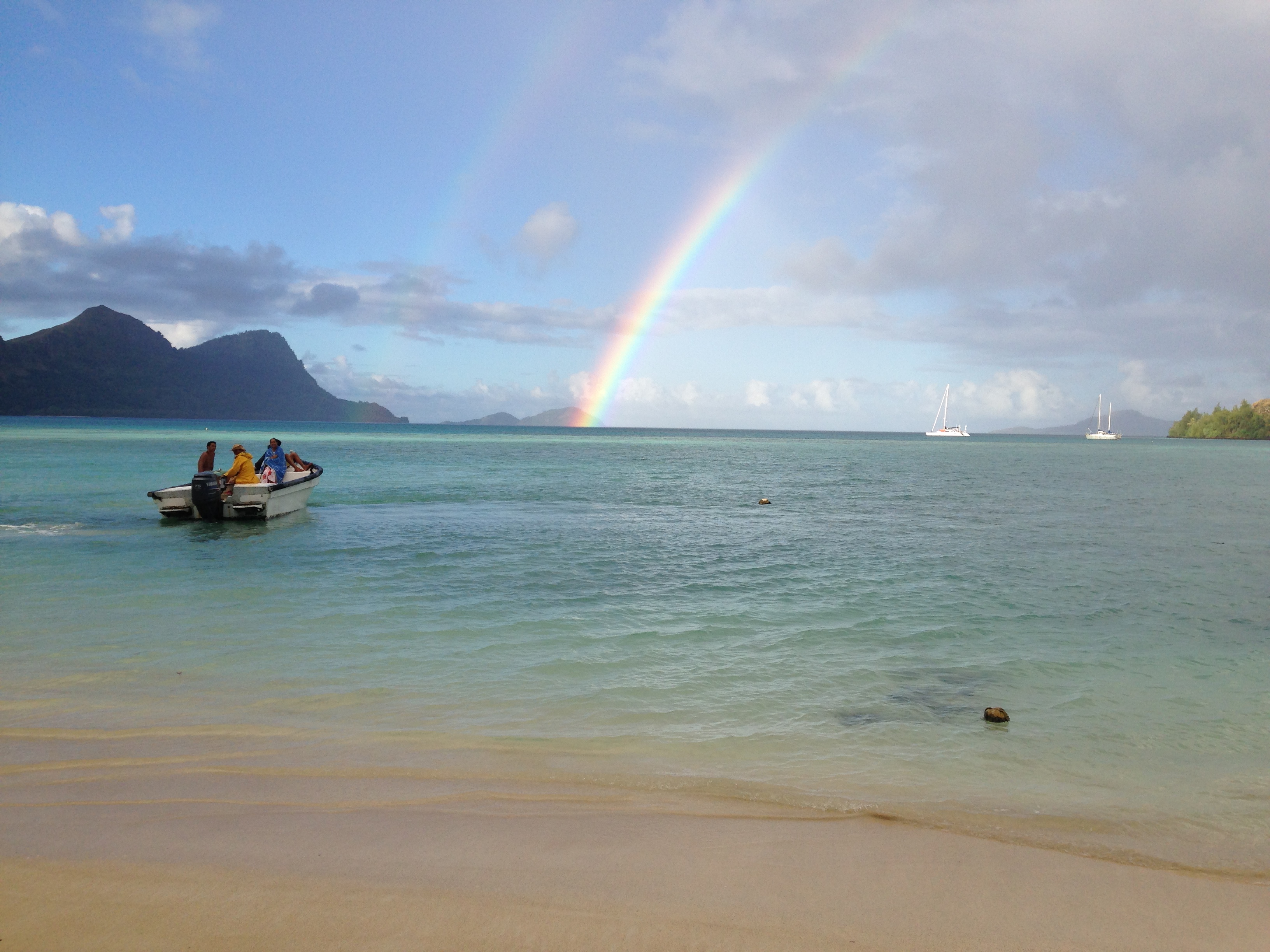
After our last newsletter, we visited the island of Taravai where the French ex-cruising sailor Pierre lives with one neighbour, and a young couple who were sharing the house. The village & church seemed neatly maintained, although Pierre said the latter was used only once a year at Chrismas. We arrived on Sunday and Pierre happened to be hosting a BBQ where we again met our pearl-farmer friends Eric & Tina. Dulcinea was anchored beside a tiny rocky outlying island where Pierre kept 2 goats which had been hand-reared and were just too friendly to be allowed to share his home. Sadly, of the pair, the female, had disappeared and when Jan & Dave visited in the Kayak, the remaining male kept closer to us than a pet dog: nuzzling us, & showing Dave where to scramble up the rock while almost avoiding treading on his hands while he scrambled up. The next day we all 4 snorkeled at the S end of Taravai. Another time, Dave went on a longer walk and found Pierre & his friend Leo investigating the overgrown site of a prehistoric (probably older than 100 years) village site.
The supply ship finally arrived from Tahiti, and, returning to Rikitea, we stocked up with eggs, meat & vegetables - although supplies already looked thin by mid day in some of the 3 or 4 little shops. We walked across Mangareva to the fellow who grew & had sold us lettuce. We returned with lettuce, bananas, pamplemouse, and bokchoy. With true Polynesian hospitality, he drove us & our purchases back to the dinghy dock, and loaded an extra stem of bananas that he did not charge us for. We gave the extras to the French family living with 3 young children on cruising catamaran off Rikitea.
The wind was due to change after 2 or 3 days and we waited across on the west coast of Taravai. The snorkeling was superb in 1 to 10 metres of water with corals, reef fish, and turtles. Then we set for a 3 day trip to Hao in the Tua Motus in a fresh SE breeze. Whereas the Gambiers are a 15 mile square reef enclosing the steep, rocky fragments of an ancient volcano, the Motus are atolls with nothing taller than a coconut palm growing on land up to 2 metres above sea level. Some Motus are up to 30 miles across but none are visible from more than a mile or so away. There are strong, unpredictable currents between them & it is obvious why they were called "The Dangerous Archipelago" in the days before GPS navigation. We past close to Mururoa where the French Nuclear tests were carried in the 1970s to 90s. In Hao there is a memorial to the military who died there (presumably following this testing).
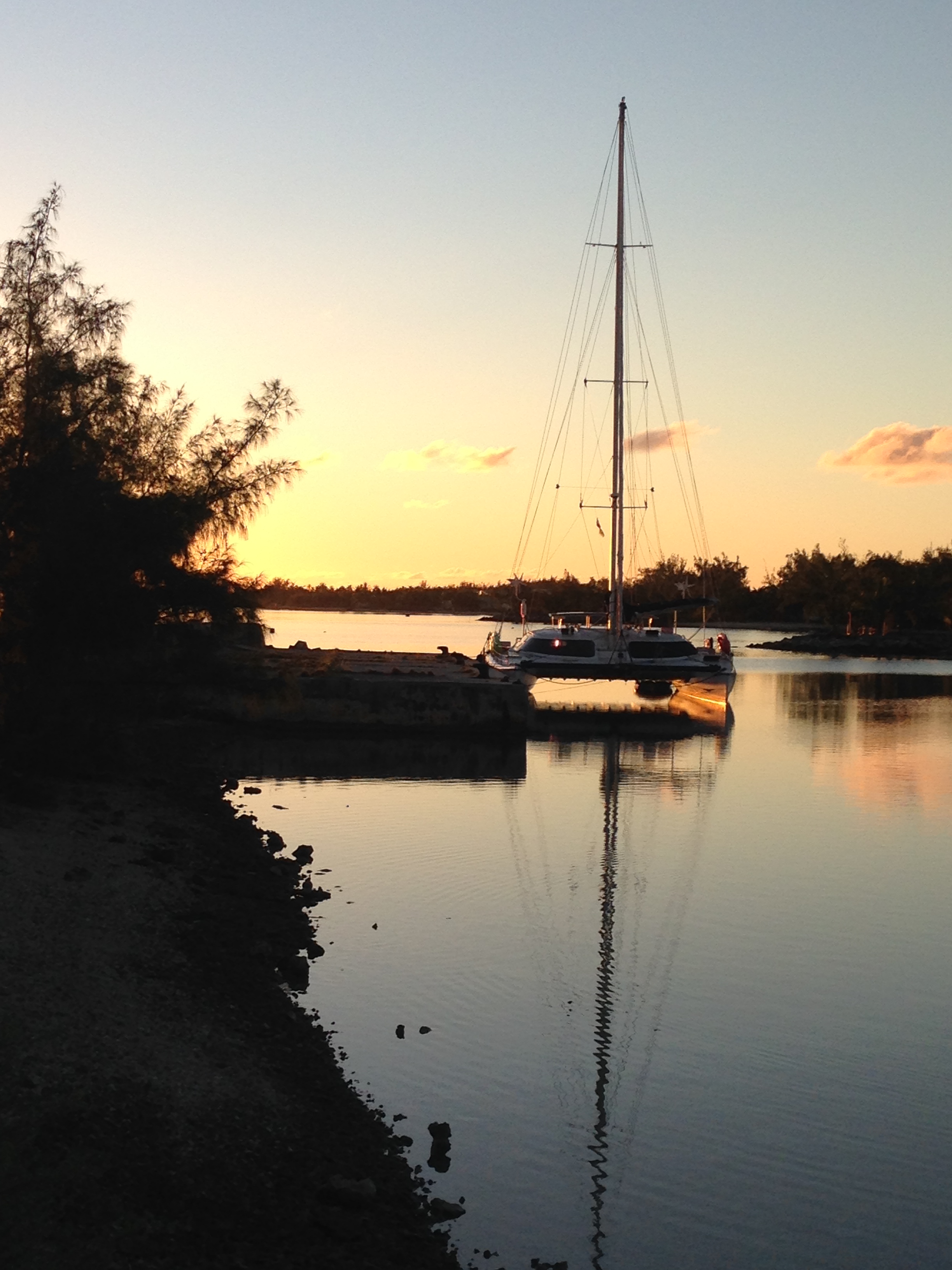
As happens so often, we stayed longer in Hao than we expected and did further snorkeling & walking.
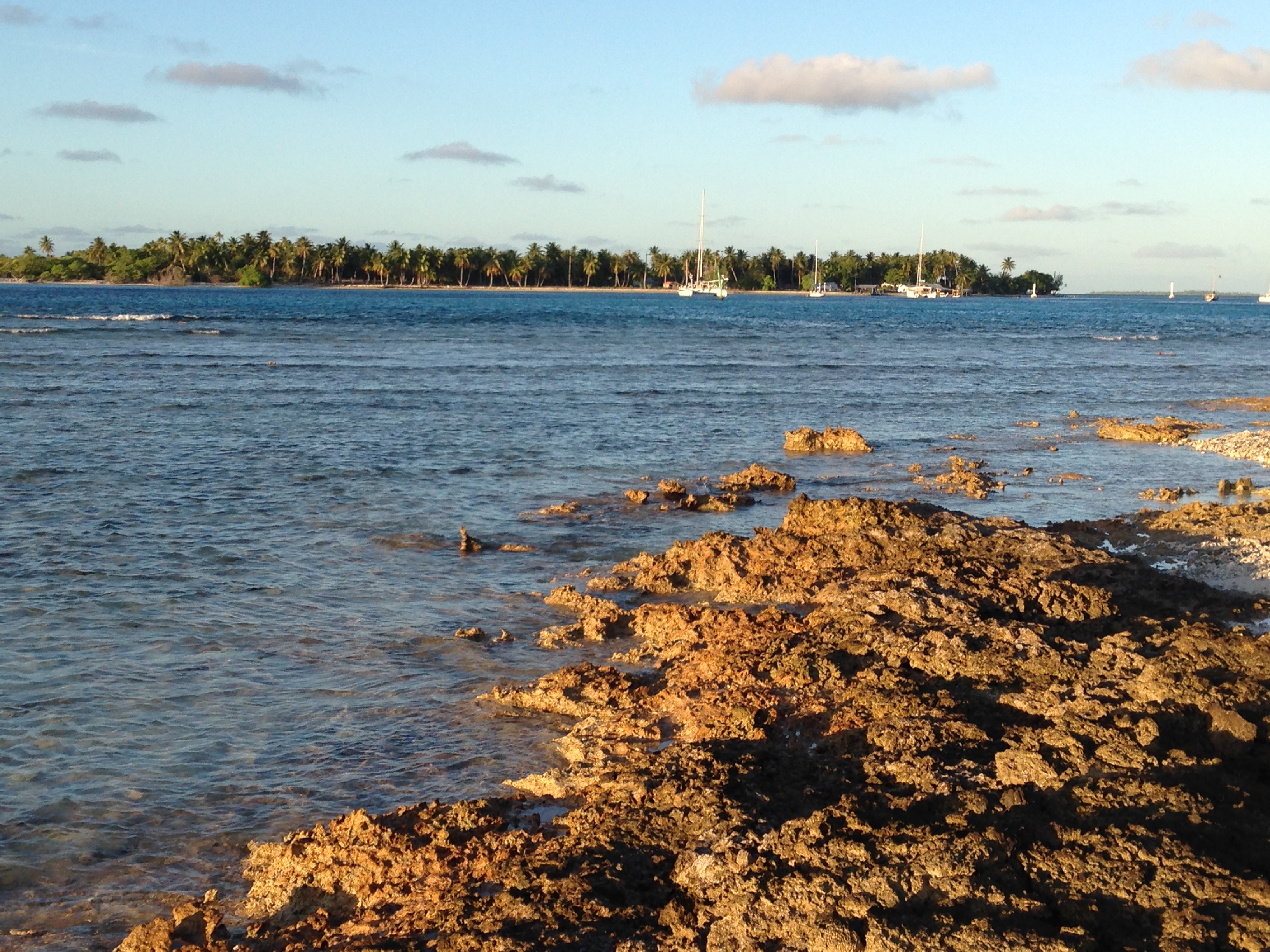
The next trip was a 2 night sail to Toau, where a tiny inlet on the outside of the reef sheltered a set of moorings placed by Gaston and Valentine in front of their little home. We bought lobster from them and, although they had to leave the next morning by open boat to Fakarava for supplies, they laid a BBQ for us before leaving. Erik thawed the leg of lamb from Dulcinea's freezer and did a very nice job cooking it on the BBQ. Again, the snorkeling was fantastic.
Another overnight trip started with a fast sail in a fresh westerly, but finished backing to Southerly in rain squalls. It brought us to the main island of Tahiti and the capital city of Papeete. As Dulcinea's anchor dropped outside Marina Taina, we looked round and saw that the next boat was Moonfleet, the home of Al and Di whom we last saw 3 years ago in Thailand. That was a lovely reunion!
Even in front of the main city of Polynesia, the water is so clear that you can see minute details of the bottom under 50 feet of water. Over the surface, the skyline of Moorea is unsurpassed. Outrigger racing canoes paddle through the anchorage every evening. Our anchorage is home to some dilapidated sailing boats through to some of the more expensive mega-yachts of the world.
It was the last few days of the "Heiva" annual Polynesian dance completions. We booked seats to watch the final night by the Port and saw a spectacular show of up to 150 men shaking their knees and women shaking their bottoms in grass skirts to the rhythm of local drums. It was most impressive, although we frankly got more pleasure from some of the villagers practicing, or the small performances beside Papeete's market where there was more intimacy and the sound amplification was more gentle for the eardrums.
With 10 days available, and Kris and Erik willing to look after Dulcinea, we booked seats to fly to Raitea and see the facilities where we may be able to leave Dulcinea through the southern summer and haul & paint her bottom next year. However, all accommodations in Raitea seemed to be booked up, so we made a snap decision and fulfilled another long-seated ambition, by flying to Easter Island on the weekly flight that same night.
17 degrees south to 27 degrees S in the back-eddy from the Humbolt Current makes a lot of difference to temperature. We were glad of all the clothes that we had hastily packed, and Dave accepted the loan of a wind/rain jacket from our host in Hotel Tuaraa.
Despite Dave's innate frugality, since our first evening was our anniversary, we ate in a good restaurant on the sea front in Hanga Roa, the only town, and watched the anchor light of a single sailing boat rolling enough to make us happy that we had not arrived in Dulcinea. At times there was no way from the anchorage to the dock without passing through breaking surf. It was off-season and except for one night there was nobody else in our hotel.
The native "Rapa" people are proud of their Polynesian ancestry, but like many islanders also conscious of their restricted gene-pool. Our native hostess had married an Australian husband and they had a lovely daughter, who arrived to meet us at the airport with flower leis. We took an island tour from Terry who has Rapa/American parentage. On other days we walked the coast, and twice rented a motor-scooter. It is a bleak, but spectacular little island 1,000 miles from anywhere with the famous stone statues round most of the coast. We were glad to have read Kathrine Routledge's account of her exploratory stay in 1914. Feral horses roam everywhere as do cattle. The sheep which dominated until 100 years ago have almost gone. It was lovely, but bleak walking country, and some current politics between native people and mainland Chile meant that we could walk anywhere that we wanted without paying park fees.
Best wishes to you all
Dave & Jan
